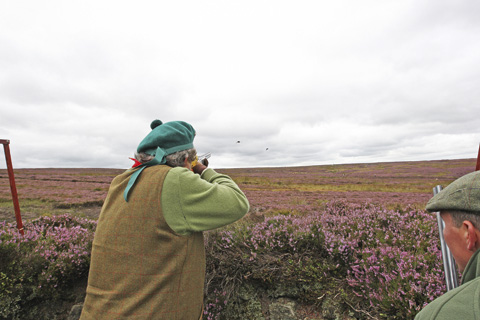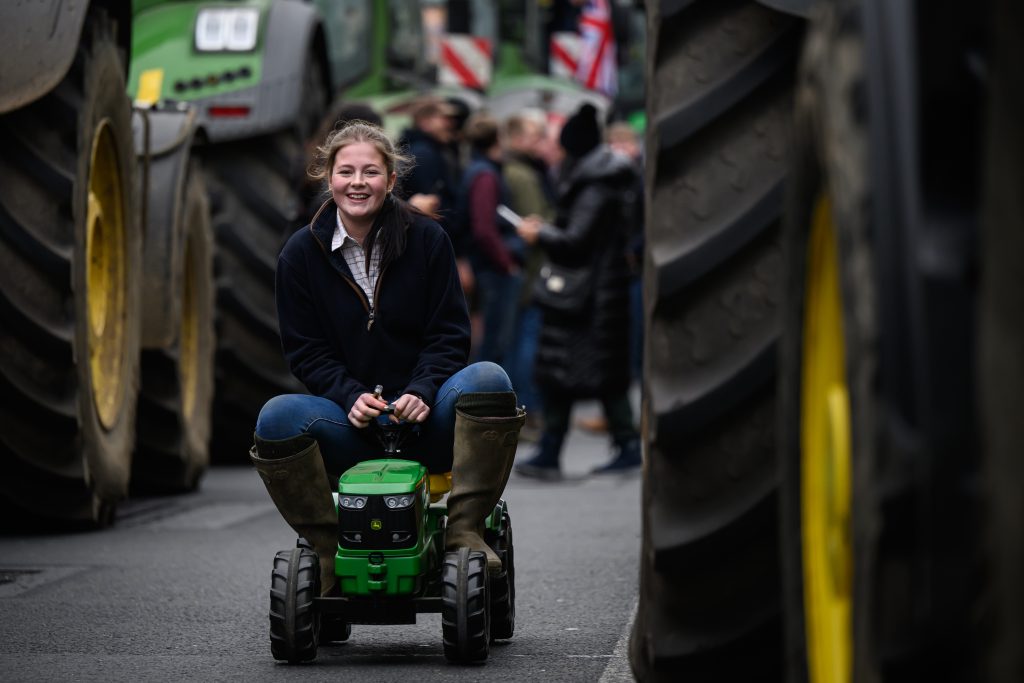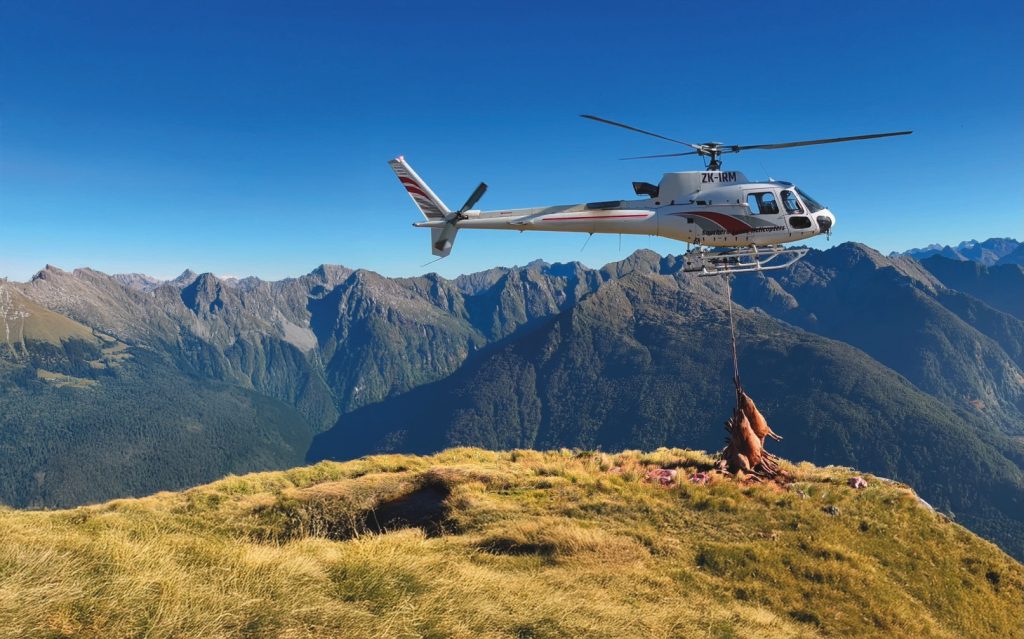Win CENS ProFlex DX5 earplugs worth £1,149 – enter here
Grouse shooting in Danby, North Yorkshire
Grouse shooting: Gallic guns enjoy grouse shooting on the North York Moors.

As I pulled into the lay-by outside the Moors Centre, Danby’s former shooting lodge, the Gallic chatter and the atmospheric aroma of Gauloises wafting across the road told me that I’d found Francois Dannaud’s party. This was to be their second day on Danby and, having clearly enjoyed their first outing in glorious August sunshine, several of them were keen to recount what I’d missed the previous day and assure me how much they were going to enjoy today.
The grouse were certainly plentiful thanks to another good breeding season on the North York Moors, and Danby, part of Dawnay Estates, had seen a substantial improvement in brood sizes and survival rates. The estate director, Robert Sword, filled me in with some details while we headed out to Danby Head on High Moor for our first drive.

Danby was purchased by the Dawnay family in 1656 and the grouse shooting was seriously developed by the 9th Viscount Downe. An outstanding shot, he kept company with the top guns of the day, shooting at Bolton Abbey, Abbeystead and Sandringham in the 1900s. The enthusiasm that saw him bag 570 grouse in a day in 1911 was inherited by his son, the 10th Viscount, which assured the basis of today’s grouse shooting.
A 350-year commitment
The royal links may not be so active now because the 11th Viscount’s primary passion had been racing Aston Martins rather than shooting – a dedication that won successes from private team entries to Le Mans in 1982, 1983 and 1984. Likewise the current custodians, the 12th Viscount Downe and his family, prefer to run Danby and their Wykeham partridge and pheasant shoot on a commercial basis. That said, their commitment to shooting and the environment is firm.
“My family has looked after this little corner of England for almost 350 years,” he said recently, “we’ve got an environmental responsibility that goes hand in hand with very diverse commercial operations.”

Virtually the entire acreage of their High and Low Moors is managed under a Higher Level Stewardship scheme with Natural England. This SSSI (Site of Special Scientific Interest) is now benefiting many moorland nesting birds and unique communities of wetland fauna and flora.
“We’ve changed our moor burning regime for environmental reasons,” said Robert, “moving from a seven- to a 10-year cycle, and we’ve used medicated grit for several years too.”
As one of 11 graziers on Danby, which is common land, the estate flock of Swaledales is dipped four times a year – “an immense help to control ticks and therefore addressing louping ill and other tick-related problems”.
Deadly 28 bores
By now I was as keen as the guns to begin. Parking on the road I took a short walk to join Bernard Ferri in butt three. This was good advice from headkeeper Peter Snaith because the views were expansive, with the heather at its best and the North Sea coastline just visible beyond the carpet of purple.
When the grouse came they were in twos and threes, allowing Bernard time to get his swing going, fortunately not distracted by an extra person by his butt. With the first drive over the guns moved quickly on to William Hill – the next drive rather than the bookmaker! I had spotted Jean-Pierre Ribes and his jaunty headgear earlier and Francois had told me he was quite a character. A Geneva-based gunsmith, he was shooting with a pair of Rizzini 28 bores and UK grouse are always on his sporting wish list. His wife, Nathalie, and her friend, Caroline Lelieur, had both killed their first ever grouse the day before, so both Jean-Pierre and Nathalie were in high spirits.

His only concern was the flanker out to our right. Was this man going to push his birds away or make the drive special? At first things looked difficult, but as the beaters approached local knowledge had obviously won out. When the pickers-up swung into action and Jean-Pierre saw the complete sequence of my photographs, grouse approaching and being accounted for by his deadly pair of 28 bores, he was even more delighted.
Our elevenses break was a useful breather for the guns and loaders, but with the pickers-up still busy around us, the beaters set off to complete a reverse drive before lunch. I took the opportunity to chat with Francois.
“We have enjoyed ourselves here,” he announced, “I’ve asked our sporting agents, Davis & Bowring, for Scottish grouse before, but they brought me here and these are good. What’s more, their champagne is good too. One of my team knows the little vineyard that produces this Pierre Gimonnet and he is very impressed!”
With the drinks as well as the grouse shooting getting plaudits, I positioned myself in the next butt to Jean-Pierre for the final drive of the morning. Christopher Mason-Hornby, who was looking after Francois’ team on behalf of Davis and Bowring, passed me and was clearly heading along to Jean-Pierre.
“Saw how well he was shooting,” he muttered to me as he passed, “I should get plenty of work for the dogs there!”
As Christopher settled down behind Jean-Pierre with his cocker and wire-haired vizsla, I was able to talk to another of the French visitors, Denis Guerin, as we waited for the beaters to begin their long approach. Somewhat strangely, Denis was crouched behind his loader Michael Wearmouth waiting for the birds to appear.
“I have a little ritual,” Denis explained at my questioning look, “my loader addresses the first covey on each drive and only then do I shoot!”
Lunchtime dilemma
By the time headkeeper Peter Snaith and his three underkeepers appeared, all resplendent in the estate tweed and scarlet ties chosen by the 9th Viscount back in the early 1900s, we were ready for a break. With three strategically placed lunch huts to choose from, we headed on to Trough House for an indulgent spread prepared by local farmer’s wife Gill Kelly. The hut had hosted similarly enthusiastic grouse shooting parties to ours and Robert Sword pointed out the hats in a row on the wall – used as impromptu targets by previous guns and left as mementos.

Lunch, however, brought about a dilemma as the pickers-up reported in. Robert broke the news about the bag to Francois and Christopher: the grouse shooting had been so good that the expected bag had already been reached. Fortunately for the team, Robert took the diplomatic course and offered the guests another drive to complete their two days in style.
A fantastic finale
Trough Gill was just along the track and, as the guns made their way to their butts, Peter suggested that I might like to join the flankers for a different view of proceedings. Different it was too – an opportunity to see the skill that goes into driving grouse at the sharp end. I was shown that a judicious flash of a flag at the right time can, indeed, make a real difference.
With Francois’ team more than happy, Chris Mason-Hornby was able to relax as his dogs began the final pick-up alongside the estate team.
“It’s been another good day,” he said.
We travelled back past Danby Castle, a building dating back to 1300. With its Court Leet Room where commoners’ issues are still discussed today, tradition and heritage are a cornerstone of the estate. When I asked Robert how long he had been employed there he laughed:
“I was surprised to find out that it was 20 years recently,” he told me. “Several of the estate team have clocked up longer than that.”
For all the history, this estate is also refreshingly forward-thinking. The business centre on the home estate of Wykeham boasts several high-tech tenants, while workshops, a caravan park, fishing lake, Wykeham Mature Plants and property enterprises all rub shoulders harmoniously with grouse shooting on Danby’s 14,000 acres and Wykeham’s 7,000 acres. This combined 21,000 acres stretches across at the upper end of the Esk Valley inland from the old whaling port of Whitby.

“It’s because the present Viscount is keen to maintain the integrity of Dawnay,” insists Robert. “He may not shoot himself but my word, he’s very supportive.”

It’s a recipe that attracts teams from the USA, Belgium, Holland and even Russia as well as the UK, and they are able to offer three consecutive days grouse shooting if required, as well as pheasant and partridge. If Robert is correct in his prediction that they are about to have their best grouse season since the glory years of 1938 and 1972 then good luck to them.
For more shoot features click here
Related Articles
Get the latest news delivered direct to your door
Subscribe to Shooting Times & Country
Discover the ultimate companion for field sports enthusiasts with Shooting Times & Country Magazine, the UK’s leading weekly publication that has been at the forefront of shooting culture since 1882. Subscribers gain access to expert tips, comprehensive gear reviews, seasonal advice and a vibrant community of like-minded shooters.
Save on shop price when you subscribe with weekly issues featuring in-depth articles on gundog training, exclusive member offers and access to the digital back issue library. A Shooting Times & Country subscription is more than a magazine, don’t just read about the countryside; immerse yourself in its most authoritative and engaging publication.







